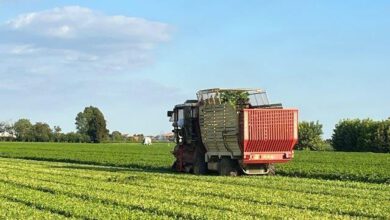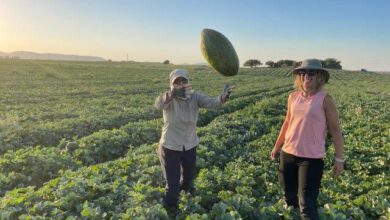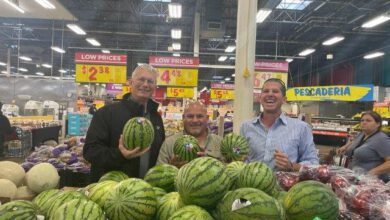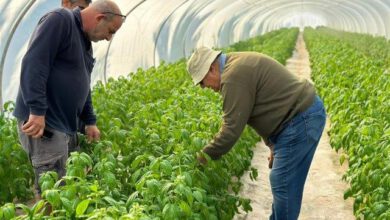Preventing fungi from our Fruit and Vegetables
In many fruits and vegetables there are sometimes unpleasant fungi that produce mycotoxins
Rona Mor


when was the last time you thought twice before biting into a soft peach or tomato, or one with a small cut? it turns out that in many fruits and vegetables (and in additional types of food), there are sometimes unpleasant fungi that produce mycotoxins that are even less pleasant.
“these mycotoxins are very harmful to people and animals. some of them are cancerous, and some cause damage to vital organs or important systems such as the immune and nervous systems. there is antifungal treatment before the fruits and vegetables reach the consumer, but you have to be aware,” says prof. rivka barkai-golan, a former senior researcher at the volcani institute of agricultural research, lecturer at the hebrew university faculty of agriculture, and coauthor of the 2008 book “mycotoxins in fruits and vegetables” (together with prof. nachman paster).
“in effect, there are three types of fungi that attack fruits and vegetables after they are picked, and develop within them during storage and delivery, among other things. as they develop, the fungi are capable of creating toxic substances – these are called mycotoxins,” she explains.
in order for the fungi to develop, several conditions are necessary. the spores – the fungi’s units of reproduction – need good moisture conditions; a suitable temperature (between 20 and 30 degrees celsius); and an opportunity to penetrate the fruit or the vegetable due to cuts, careless harvesting and treatment, or damage from insects, storms and rain.
barkai-golan describes the three types of fungi that produce four types of mycotoxins, and classifies them as storage fungi (which penetrate the fruit or vegetable through a cut caused by careless harvesting) and field fungi (which are also capable of attacking a whole fruit): say hello to aspergillus, aspergillus niger, penicillium and alternaria.
aspergillus is a fungus that occurs mainly in figs and dates, and produces mycotoxins called aflatoxins, which are known to be cancerous. this fungus and mycotixins are also produced in wheat kernels, legumes, rice and peanuts. according to a survey conducted at cornell university, aflatoxins are apparently the mycotoxins with the strongest effect on human beings and animals. according to the survey, in addition to fruits and vegetables, they are likely to erupt mainly in milk, cheese, corn, peanuts, cotton, nuts, almonds and herbs (to name but a few).
a report published by the volcani insitute in 2010 notes that there are no means at present for breaking down these mycotoxins in fruits, but one way to reduce them is to maintain proper storage conditions and throw away defective or rotten produce.
aspergillus niger is a fungus that produces mycotoxins called ochratoxins, which develop mainly in grapes and wine. the fungi penetrate the grapes mainly due to a wound or cut caused by careless treatment, or by insects, and the damage is not always visible.
penicillium is a mold fungus that attacks mainly apples and pears and other fruits with seeds and pits, such as peaches, plums and cherries. sometimes, the rot it produces cannot be seen at all because it is deep inside the fruit. it produces a mycotoxin called patulin, which damages the nervous and immune systems.
alternaria is a fungus common in many fruits and vegetables after harvesting. the optimal temperature for its growth is 22-28 degrees celsius. “this is a fungus that can develop easily,” says barkai-golan. “it really likes tomatoes, peppers, melon, squash and citrus fruits, for example.” its mycotoxins are resistant to pasteurization, and therefore can be found in fruit and vegetable products that have been pasteurized. the best way to reduce them would be to separate the damaged fruits before they are processed.
according to barkai-golan, “in most countries the amounts of permitted mycotoxins are minuscule. in israel too, the agriculture ministry has a monitoring system.”
but still the mycotoxins exist, and on the way from the field and during storage, anything can happen. it should be noted, however, that even if the fungi attack the fruit, it’s not certain that a mycotoxin will be produced.
“in any case,” she continues, “the most important thing is to keep the damaged fruits and vegetables, the moldy and rotten ones, away from the healthy ones. in addition, proper storage conditions should be maintained – as low a temperature as possible, drying, prevention of moisture, aeration and keeping away the affected fruits. all that is also true of foods produced from the fruits and vegetables.”
and what about organic food? “organic fruits and vegetables actually suffer far more harm from fungi and mycotoxins, and are far more likely to be damaged than those protected by synthetic pesticides and other antifungal substances,” says barkai-golan.
haaretz 25/7/13




